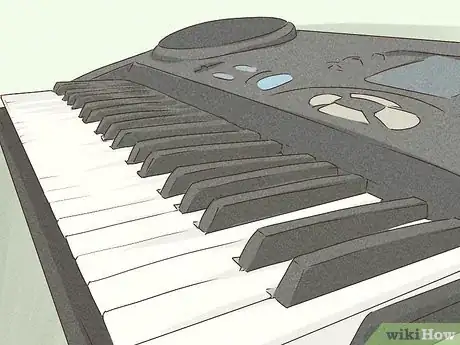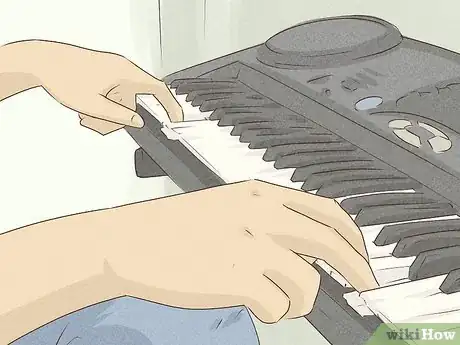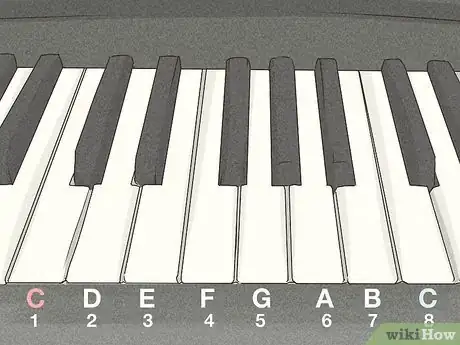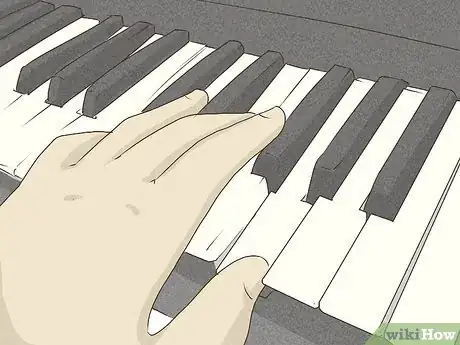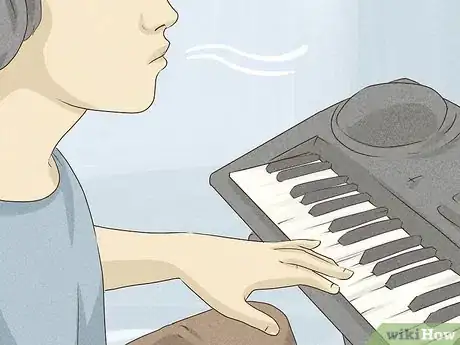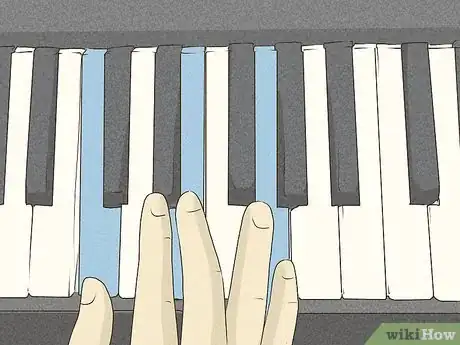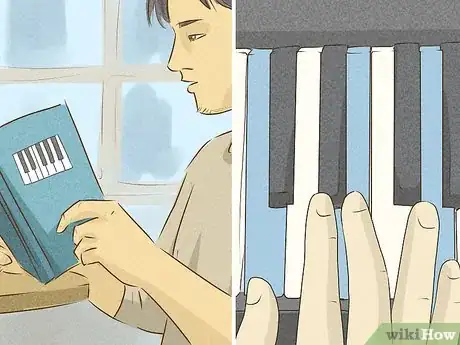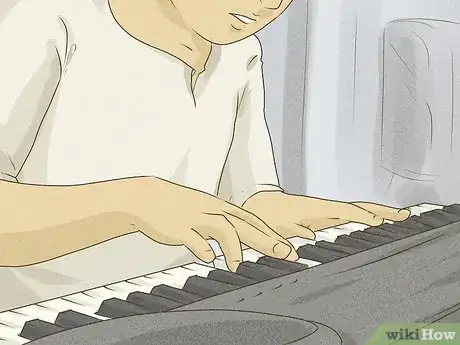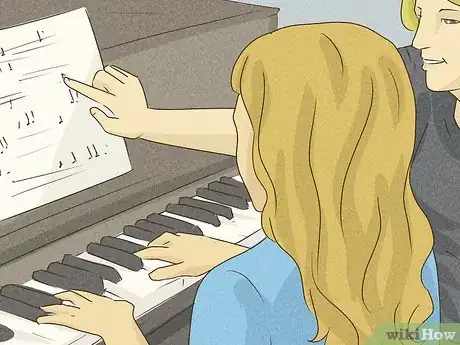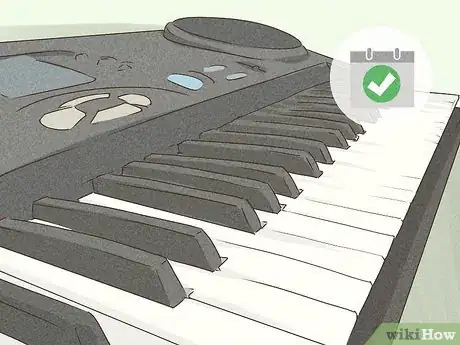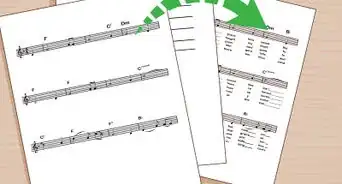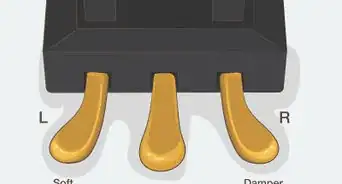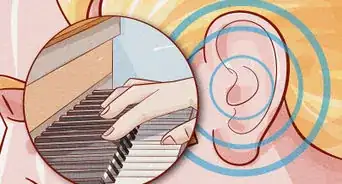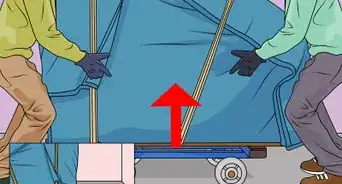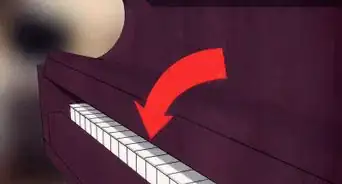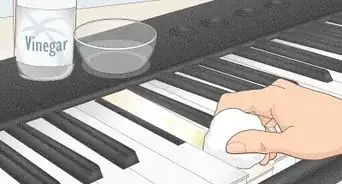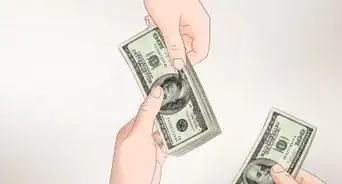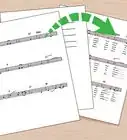This article was co-authored by Michael Noble, PhD. Michael Noble is a professional concert pianist who received his PhD in Piano Performance from the Yale School of Music. He is a previous contemporary music fellow of the Belgian American Educational Foundation and has performed at Carnegie Hall and at other venues across the United States, Europe, and Asia.
wikiHow marks an article as reader-approved once it receives enough positive feedback. This article received 41 testimonials and 87% of readers who voted found it helpful, earning it our reader-approved status.
This article has been viewed 1,724,858 times.
The piano is a unique and interesting instrument, and also is fun to play. While you may think that it is impossible to become a proficient and consistent player without years and years of expensive piano lessons, that is not necessarily the case. With a little knowledge about the notes, keys, and chords, and a lot of practice, you can teach yourself to play the piano.
Steps
Playing by Ear
-
1Find a piano or keyboard to use. If you don't have one at home, perhaps you can borrow one from a friend. The benefit of learning to play on a piano is that the sound is acoustic because it's generated by a string. It also contains all 88 keys. Keyboards don't have either of these features. Keep that in mind when making your selection.
- Depending on the type of piano (upright, baby grand, grand), acoustic pianos are generally more expensive than electronic keyboards, but they can be rented to own at some piano stores.
- Tune the piano so that you can train your ear to hear the notes correctly. Older pianos are usually out of tune, especially if they are not played regularly. If your piano hasn't been played for ages or has recently been moved, you may want to have it tuned professionally before going any further.
- If you're unable to find a piano, a keyboard is a great alternative. They're affordable, never go out of tune, and have lots of sounds and features that can enhance your music. Not to mention, they're a lot easier to move around and don't take up much space. A keyboard is a great tool for a beginner. You can always start out on a keyboard and then upgrade to a piano.
- Get a learning keyboard. These specialty instruments light up in a specific order to help you learn songs more quickly. Typically, they come with books and videos that will help you learn musical notation.
-
2Sit down at the piano or keyboard and familiarize yourself with it. Play with it and identify the middle tones (middle of piano), flat tones (left black keys), sharp tones (right black keys), bass tones (low sounds) and high tones (high sounds). Really listen to each of them, and note how they are different from the others. Keep practicing until you can tell the difference between them.Advertisement
-
3Learn the major keys. You'll have to study the major keys if you want to be able to identify the sounds that you hear. Some people do this by learning the major keys and then assigning a number to them. For instance, 1 is C; 2 is D; 3 is E; 4 is F; 5 is G; 6 is A; 7 is B; 8 is C. Notice how the numbers 8 and 1 both represent the note C, but the number represents a lower or higher C. The number 1 represents middle C.
- Once you know how to do this, you can label songs by numbers instead of letters. For instance, "Mary Had a Little Lamb" would be E - D - C - D - E - E - E. This would be represented as 3 - 2 - 1 - 2 - 3 - 3 - 3.
- If you don't have any musical knowledge at all, you will have wing it and figure it out by trial-and-error.
-
4Learn the chords. Songs are mostly composed of variations of chords. You'll hear them in different keys, but the chords are composed of the same intervals. Identifying the notes that comprise the chords is crucial when you're figuring out a song by ear. So, learn how to play the basic chords and find out where they are located on the piano. Play the chords to familiarize yourself with the sound of them so that you recognize them. Even if you don't know the chord's name, you should know what they sound like. You should also be able to recognize if the chords are in a low register or high register, and from that you'll know where they are located.[1]
- The C Major triad (or chord), comprised of C, E, and G, is one of the simplest chords to learn. Play this chord on middle C first (right hand fingering is 1, 3, and 5, and left hand fingering is 5, 3, and 1) and then move it to different octaves on the piano, keeping C as the lowest note.
-
5Notice patterns. All songs are composed of musical patterns. Chords repeat themselves often in a steady beat or rhythm. If you can identify the patterns, or chord progressions, that you hear, it is much easier to play a song that you hear. You'll be able to learn which chords are combined with others. This helps you to understand how melodies and baselines are constructed, which helps you to make your own.
- Learning the basics of music theory can make it easier for you to analyze these patterns. From there, you can build a solid foundation for learning to play by ear or even improvising your own music on the piano!
- You can find tons of music theory content on websites like YouTube or MusicTheory.net, or check out a book from your local library.
-
6Master humming. Humming helps you internalize the song. Then, you'll be better able to repeat it on a piano. In other words, hum the tune. Then, sit down and the piano and repeat it. Once you know the chords and what the notes should look like, you should be able to duplicate them by ear.
-
7Review finger placement. To really play, you need to know which fingers to play the keys with. The best way to do that is to get a basic understanding of finger placement from a beginner's piano book. The fingers are numbered. For instance, the thumb is 1 and the pinky is 5. These books will teach how to play each note by telling you which finger to play it with.
-
8Practice. Listen to songs. Then practice humming them and see if you can duplicate the song on your piano or keyboard. Or, select a song that you like and, using the techniques that you've learned, attempt to play it by ear. Becoming a good piano player requires lots of practice. You'll need to practice at least 3 times a week.
Learning Basic Piano Knowledge
-
1Learn some basic piano knowledge. There are 88 keys on a piano. White piano keys are called naturals because they make a natural note when pressed. Black piano keys are called accidentals because they make a sharp or flat note when pressed.[2]
- There are 7 naturals on the keyboard: C-D-E-F-G-A-B
- There are 5 accidentals per octave, and they can either be sharp or flat.
- Learn the names of the left hand and right hand staff: bass clef and treble clef.
-
2Use instructional books. Since you don't have a teacher, let instructional books be your guide. There are many books available in both specialty music stores and regular book stores that will take you through a step-by-step process of learning how to read sheet music, play basic scales, and learn chord progressions and then simple songs.[3]
- Utilize multimedia tools such as DVDs. YouTube videos also are a valuable source. If you are a visual learner, these tools will suit you well because you can see the music being played correctly.
-
3Study the notes. You will need to learn where the notes are located on the piano, what they sound like, and how the note is written on the staff when you’re reading sheet music. To do that, you can make flash cards to identify the notes on the staff.[4] You can purchase stickers to place on your piano to help you learn the placement of the notes. You also can purchase books that help beginners learn how to read notes.
- Familiarize yourself with common chords. Start with the chords in majors. Then follow with the minors.
-
4Learn finger placement. Use the instructional books to help you learn how to play the notes. Playing the notes with the correct fingers is just as important as learning where the notes are located. If you don't practice using the correct method, then you'll have trouble playing up and down the scales.[5]
-
5Practice playing scales. Playing scales helps you familiarize yourself with the notes and the sound of them. If you are learning how to sight read, playing music while you sight read helps you learn where the notes are located and what they look like on the staff. Play the scales for each hand one at a time. Then play them together.
-
6Learn some easy songs. Using your instructional books, go through the lessons. They will teach you to play easy songs as well as mastering finger placement. Practicing with easy songs also helps you to memorize where the notes are located, which improves your sight-reading abilities. Start with C major. Then, work your way through the minor keys, so that you can familiarize yourself with them.
- When you're practicing a piece of music, try to play the melody and bass lines for each hand separately at first. Once your playing of each improves, then practice playing them together.
-
7Practice, practice, practice. Learning to play the piano requires a lot of practice. Play with sheet music to get better at sight reading, fingering, and playing. Plan on practicing about 3 to 4 times a week for about a half hour. Don't move on to the next lesson until you've mastered the previous lesson.[6]
Hiring a Piano Instructor
-
1Look for an instructor. Taking piano lessons is the costliest, but also the most proficient way to learn music. A good piano teacher will not only have a proven track record of helping beginners learn music, but will also be able to teach you the basics correctly. Using an instructor helps you avoid bad habits that can take a long time to unlearn.
- Review music theory, sight reading, fingering, and playing with an instructor.
- Ask the instructor to review where the notes are located on the staff and the piano.
- They can also help you meet specific goals, such as mastering a favorite song or developing your improvisation skills.
-
2Decide how often to see an instructor. Because your goal is to teach yourself how to play, then you probably won't be visiting an instructor frequently. Go to an instructor once a month just to do a check-up on your progress or to ask questions about anything that is puzzling you. For instance, you might have questions about if you're playing a song in the correct tempo.
-
3Practice. Once again, you will need to practice a great deal in order to learn how to play. Many people that visit piano teachers practice several times a week. So, practice 2 to 3 times a week or every day if you like. Plan on practicing playing for at least 30 minutes 2 times a week, but you also will need to take time out to review your notes and sight-reading abilities. You don't need a keyboard or a piano to practice reviewing your notes.[7] .
- Your instructor might have specific tips about how often to practice and how to get the most out of your practice sessions.
Expert Q&A
-
QuestionIs piano hard to learn by yourself?
 Michael Noble, PhDMichael Noble is a professional concert pianist who received his PhD in Piano Performance from the Yale School of Music. He is a previous contemporary music fellow of the Belgian American Educational Foundation and has performed at Carnegie Hall and at other venues across the United States, Europe, and Asia.
Michael Noble, PhDMichael Noble is a professional concert pianist who received his PhD in Piano Performance from the Yale School of Music. He is a previous contemporary music fellow of the Belgian American Educational Foundation and has performed at Carnegie Hall and at other venues across the United States, Europe, and Asia.
Professional Pianist Learning the basics is quite simple if you have a good resource, however, becoming proficient usually requires a teacher whether online or in person.
Learning the basics is quite simple if you have a good resource, however, becoming proficient usually requires a teacher whether online or in person. -
QuestionIs it easy to learn the piano?
 Michael Noble, PhDMichael Noble is a professional concert pianist who received his PhD in Piano Performance from the Yale School of Music. He is a previous contemporary music fellow of the Belgian American Educational Foundation and has performed at Carnegie Hall and at other venues across the United States, Europe, and Asia.
Michael Noble, PhDMichael Noble is a professional concert pianist who received his PhD in Piano Performance from the Yale School of Music. He is a previous contemporary music fellow of the Belgian American Educational Foundation and has performed at Carnegie Hall and at other venues across the United States, Europe, and Asia.
Professional Pianist It is generally not considered an easy skill to master, but becoming a proficient player in a year or so is doable if you have a good teacher and practice regularly.
It is generally not considered an easy skill to master, but becoming a proficient player in a year or so is doable if you have a good teacher and practice regularly. -
QuestionWhat is the best way to learn to play the piano?
 Michael Noble, PhDMichael Noble is a professional concert pianist who received his PhD in Piano Performance from the Yale School of Music. He is a previous contemporary music fellow of the Belgian American Educational Foundation and has performed at Carnegie Hall and at other venues across the United States, Europe, and Asia.
Michael Noble, PhDMichael Noble is a professional concert pianist who received his PhD in Piano Performance from the Yale School of Music. He is a previous contemporary music fellow of the Belgian American Educational Foundation and has performed at Carnegie Hall and at other venues across the United States, Europe, and Asia.
Professional Pianist The best way is to get a good teacher with whom you get along and to create a method that works for the student.
The best way is to get a good teacher with whom you get along and to create a method that works for the student.
References
- ↑ https://www.pianomagic.com/PMMOcourse/whatispm.html
- ↑ https://www.piano-lessons-for-life.com/piano-keyboard-layout.html
- ↑ https://takelessons.com/live/piano/piano-books-for-beginners
- ↑ https://quizlet.com/3823889/piano-notes-flash-cards/
- ↑ https://www.pianoscales.org/fingerings.html
- ↑ https://www.davidnevue.com/pianomyths.htm
- ↑ https://www.davidnevue.com/pianomyths.htm
About This Article
To teach yourself to play the piano, try watching free online piano tutorials designed for beginners. You can also purchase instructional books or DVDs that let you learn piano at your own pace. When you're first getting started, focus on learning the notes and working on your finger placement. Once you're comfortable with that, you can practice playing scales and learn easy songs. Whichever method you use to teach yourself piano, try to practice 3-4 times a week for at least 30 minutes since learning piano takes a lot of practice. To learn how to play the piano by ear, keep reading!
